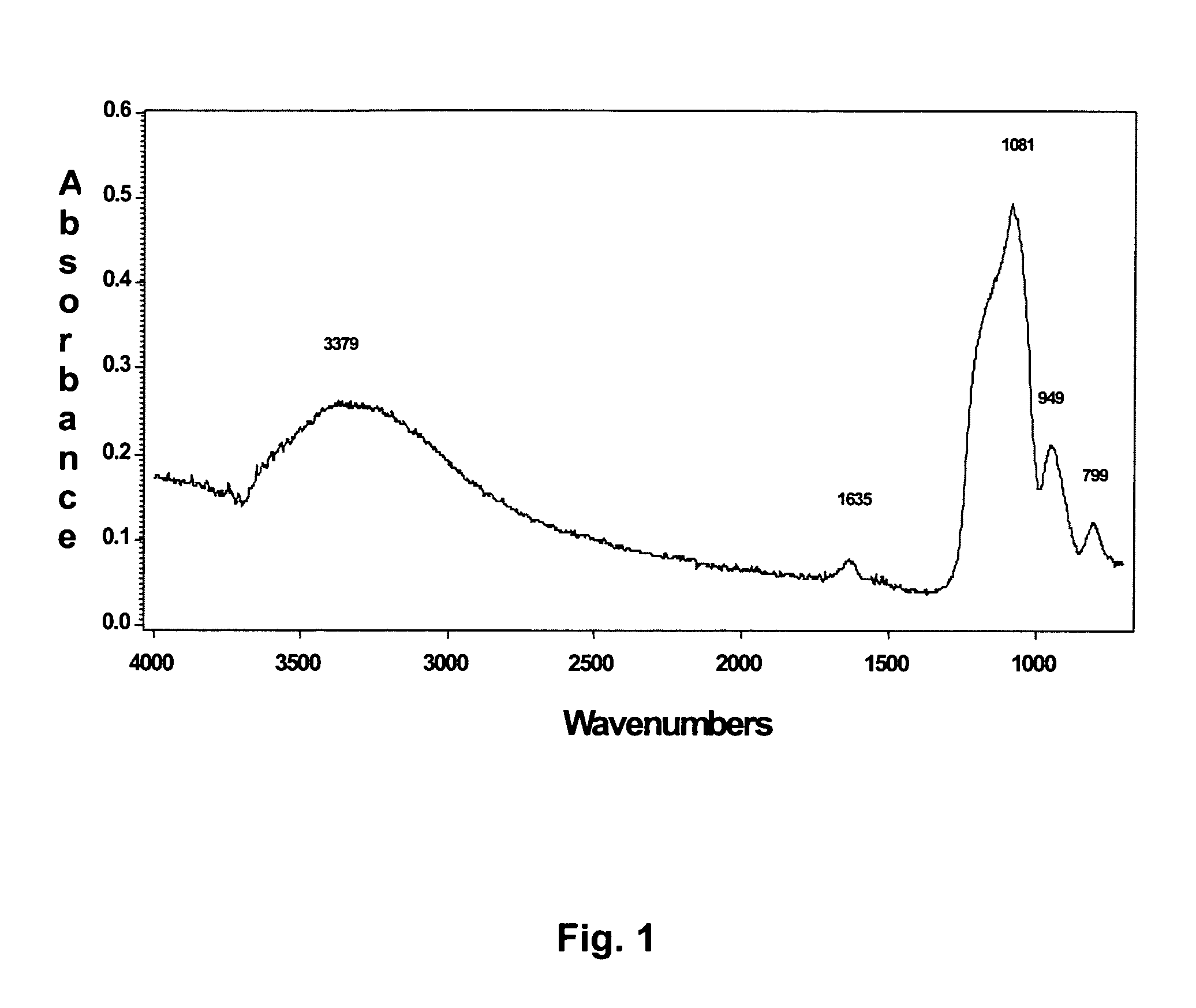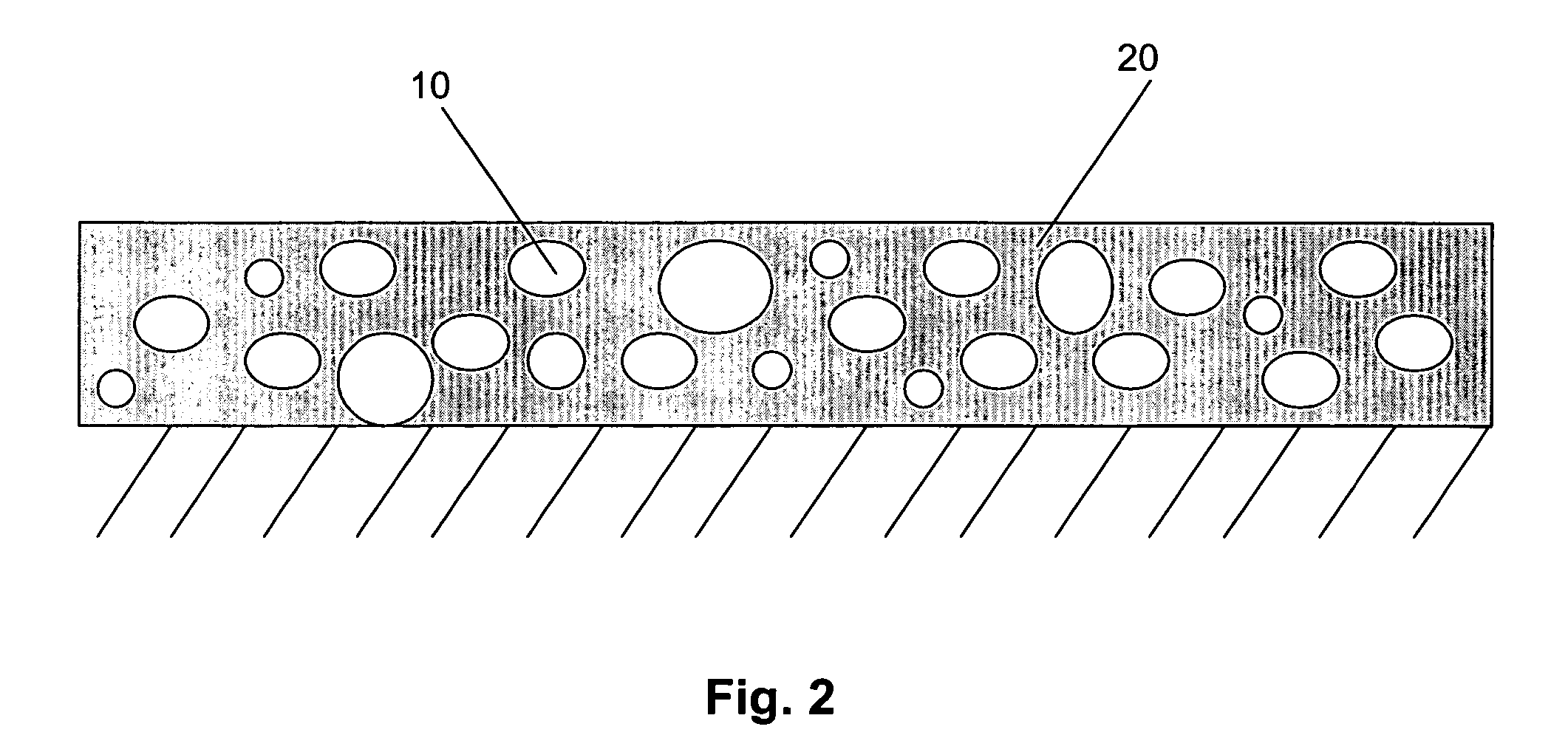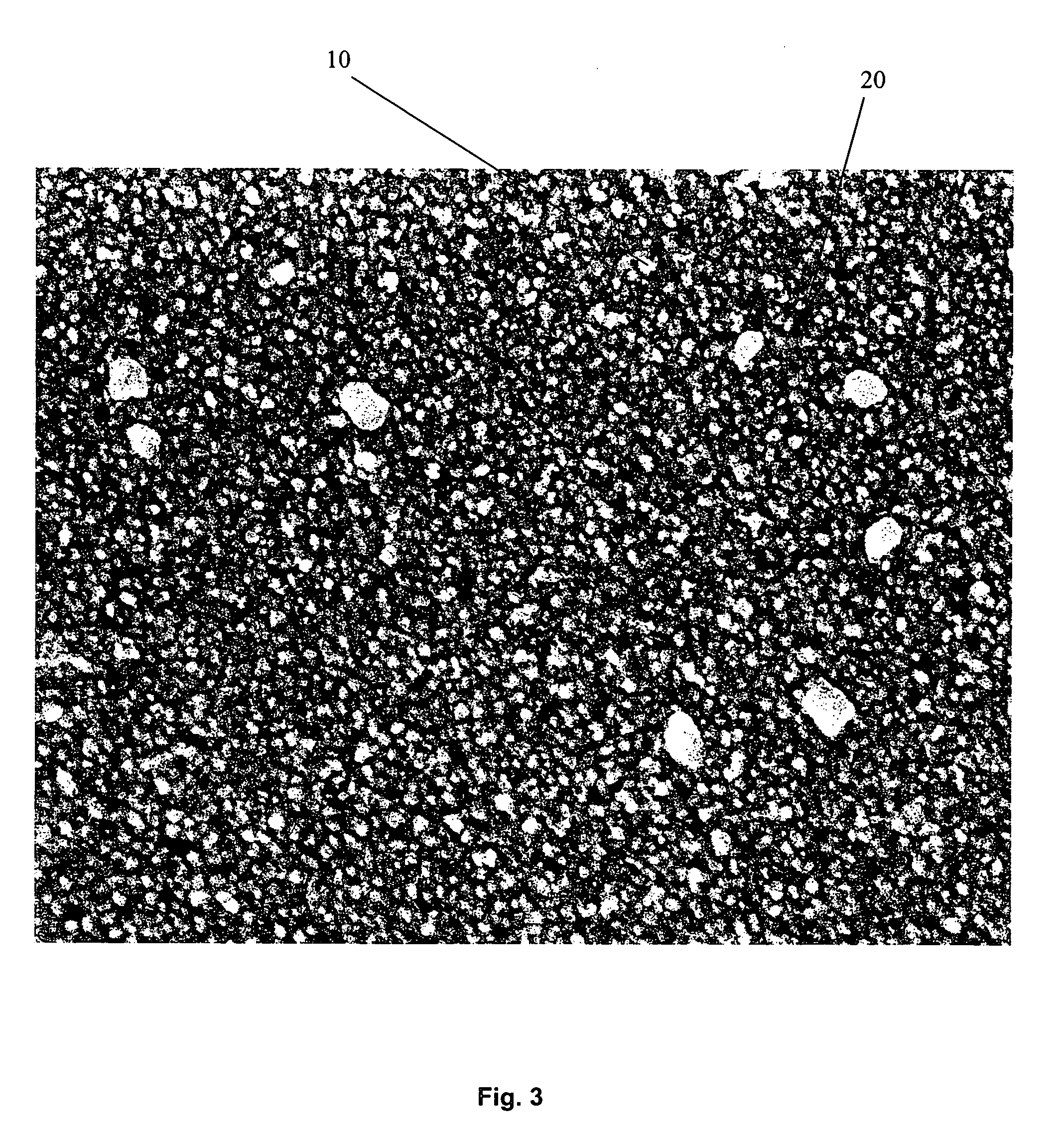Multi-layer coatings with an inorganic oxide network containing layer and methods for their application
a technology of inorganic oxides and layers, applied in the field of multi-layer coatings, can solve the problems of affecting the anti-fogging, affecting the anti-fogging effect, so as to improve the anti-fouling, anti-fogging, and/or anti-fogging
- Summary
- Abstract
- Description
- Claims
- Application Information
AI Technical Summary
Benefits of technology
Problems solved by technology
Method used
Image
Examples
example 1
Preparation of a Hydrolyzed Organosilicate Binder
[0112]An acid hydrolysis catalyst solution, referred to herein as solution “A”, was prepared by adding 7,000 grams of deionized water to a clean, dry 2 gallon container. With stirring 1.0 gram of 70% nitric acid was added and set aside.
[0113]15.5 grams (˜0.10 moles) of 98% TMOS (tetramethoxysilane) representing ˜6 grams of SiO2 was added to a clean, dry 1 liter glass beaker. 3.6 grams of solution A (˜0.20 moles of H2O) was slowly added to the TMOS, controlling the exotherm by using an ice bath to maintain the temperature below 25° C. Upon the completion of the addition of solution A, this partially hydrolyzed silane solution was held for one hour at ˜25° C. In a separate clean, dry beaker, 290.5 grams of ethanol and 290.5 grams of deionized water were mixed and then added to the partial hydrolyzate with stirring, after the one hour hold time. Then the pH of the diluted silane solution (pH˜5) was adjusted to pH˜3.9 by adding 0.80 grams...
example 2
Preparation of a Hydrolyzed Organosilicate Binder
[0115]15.5 grams (˜0.10 moles) of 98% TMOS representing ˜6 grams of SiO2 and 3.6 grams of anhydrous methanol (cosolvent) were added to a clean, dry 1 liter glass beaker. 3.6 grams of solution A (˜0.20 moles of H2O) was slowly added to the TMOS solution, controlling the exotherm by the rate of addition of solution A. The peak temperature attained during the addition was 33° C. Upon the completion of the addition of solution A, this partially hydrolyzed silane solution was held for one hour at ˜25° C. In a separate clean, dry beaker, 287 grams of ethanol and 290.5 grams of deionized water was mixed and then added to the partial hydrolyzate with stirring, after the one hour hold time. Then, the pH of the diluted silane solution. (pH˜5) was adjusted to pH˜3.9 by adding 0.80 grams of glacial acetic acid with stirring. The resulting. 1% SiO2 binder solution was allowed to fully hydrolyze overnight with stirring.
[0116]Application on test pan...
example 3
Preparation of a Hydrolyzed Organosilicate Binder
[0117]15.5 grams (˜0.10 moles) of 98% TMOS (tetramethoxysilane) representing ˜6 grams of SiO2 was added to a clean, dry 1 liter glass beaker. 3.6 grams of solution A (˜20 moles of H2O) was slowly added to the TMOS, controlling the exotherm by the rate of addition of solution A. The peak temperature attained during the addition was 40° C. Upon the completion of the addition of solution A, this partially hydrolyzed silane solution was held for one hour at ˜25° C. In a separate clean, dry beaker, 290.5 grams of ethanol and 290.5 grams of deionized water were mixed and then added to the partial hydrolyzate with stirring, after the one hour hold time. Then, the pH of the diluted silane solution (pH˜5) was adjusted to pH˜3.9 by adding 0.80 grams of glacial acetic acid with stirring. The 1% SiO2 binder solution was allowed to fully hydrolyze overnight with stirring.
[0118]Application on test panels with above solution show dewetting problems ...
PUM
| Property | Measurement | Unit |
|---|---|---|
| thickness | aaaaa | aaaaa |
| crystalline diameter | aaaaa | aaaaa |
| thickness | aaaaa | aaaaa |
Abstract
Description
Claims
Application Information
 Login to View More
Login to View More - R&D
- Intellectual Property
- Life Sciences
- Materials
- Tech Scout
- Unparalleled Data Quality
- Higher Quality Content
- 60% Fewer Hallucinations
Browse by: Latest US Patents, China's latest patents, Technical Efficacy Thesaurus, Application Domain, Technology Topic, Popular Technical Reports.
© 2025 PatSnap. All rights reserved.Legal|Privacy policy|Modern Slavery Act Transparency Statement|Sitemap|About US| Contact US: help@patsnap.com



